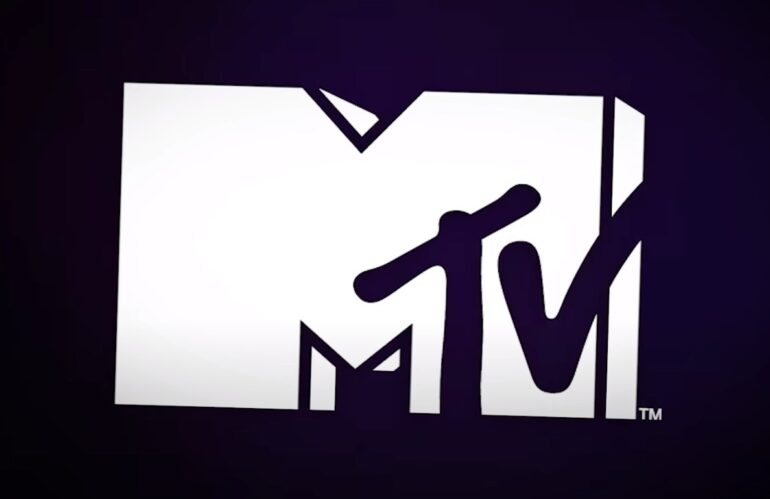This article delves into the unique contribution of MTV, the first network devoted to music videos, and its transformative impact on music consumption and promotion. Uncover how this novel approach not only reshaped the industry but also altered the way artists connect with their audience, paving the way for the immersive experiences we enjoy today.
How MTV Sparked a Musical Revolution
While music and television had always coexisted, it wasn’t until the inception of MTV that a genuine fusion of the two worlds occurred, forever altering the musical landscape. The birth of MTV signified a new age where artists didn’t solely depend on radio play or live gigs to connect with their audience. Instead, they gained a visual platform that enabled them to exhibit their creativity and captivate audiences in entirely new ways.
MTV’s Emergence: The Dawn of a New Musical Era
In 1981, MTV sprang onto the scene, heralding a new epoch where music videos became a cornerstone of popular culture. The idea behind MTV was simple yet transformative – providing a stage for artists to showcase their talent through visually captivating videos. With its catchy tagline “I want my MTV,” the network rapidly amassed a devout following, spellbinding audiences across the globe.
At a time when music videos were still a novel concept, MTV seized the chance to expose this unexplored art form to the general public. The combined experience of seeing and hearing an artist simultaneously brought a novel layer of engagement and delight to music fans. Suddenly, listeners could connect with their favorite artists on a more profound level, immersing themselves in their artistic vision and narrative.
The Genesis and Establishment of MTV
The idea behind MTV was the brainchild of Bob Pittman, an executive at Warner-Amex Satellite Entertainment. Pittman recognized the untapped potential of music videos and envisioned a dedicated platform for this new medium. Backed by key figures in the industry, including record labels and artists, MTV was actualized. Its launch on August 1, 1981, signaled the onset of a cultural phenomenon that would influence the landscape for years to come.
Bob Pittman’s vision for MTV extended beyond merely broadcasting such videos; he aspired to create an immersive experience for viewers that would also be a cultural influencer shaping the musical environment. To realize this vision, Pittman assembled a team of talented individuals who shared his passion and ambition.
The team at MTV dedicated their efforts to curating a diverse selection of video clips, ensuring a wide array of choices for their audience. From the catchy pop hits of Michael Jackson to the rebellious rock anthems of Guns N’ Roses, MTV catered to a variety of musical tastes, reflecting the diversity of its viewers. This commitment to diversity and inclusivity distinguished MTV from other channels of its time.
The Debut and Initial Reception of MTV
MTV’s inaugural broadcast premiered the Buggles’ emblematic song “Video Killed the Radio Star.” An apt choice, the song’s lyrics resonated with the shifting musical era. The MTV launch sparked both anticipation and skepticism, with critics wondering whether a television network exclusively airing music videos could maintain a dedicated audience. However, audiences quickly warmed to the novel format, and MTV’s popularity skyrocketed.
Artists soon realized the potential of such videos and began investing in high-quality productions, which ignited a wave of innovation within the music video realm. Renowned directors and artists pushed creative boundaries, producing visually impressive and thought-provoking videos that captivated global audiences.
Key highlights of MTV’s evolution:
- Early Programming: Initially, MTV primarily aired rock and pop videos, but as the network’s popularity grew, it diversified to include an array of genres such as rap, R&B, country, and alternative genres. MTV became a melting pot for a multitude of music styles, fortifying its place in the sector.
- Influence on Society: MTV’s impact reverberated beyond the sphere. It influenced fashion trends, popular culture, and even technology. The success of MTV paved the way for similar music video channels and reshaped the way music was consumed and promoted.
- Global Popularity: MTV didn’t just transform the American music industry; it went on to have a global impact. As the channel’s popularity grew, it became a universal phenomenon, reshaping industries and cultures worldwide.
Music Videos’ Transformative Effect on the Music Sector
The rise of MTV elevated music videos to a potent tool for artists to gain international recognition. Artists could bring their songs to life through visual storytelling, leaving a lasting impression on audiences. It was no longer just about audio; it encompassed the entire package – the visuals, the fashion, and the narrative.
Noteworthy aspects of MTV’s impact:
- Visual Storytelling: Music videos provided an avenue for artists to visually narrate their stories, creating a synergistic relationship between the audio and visual experience. The videos became a vehicle for artists to establish deeper connections with their audiences;
- Rise of Directors: The growing importance of such videos sparked a demand for visionary directors capable of manifesting artists’ ideas. Directors like David Fincher and Spike Jonze left their indelible mark on the industry, each adding their unique touch to their creations.
MTV’s Profound Influence on Pop Culture
MTV’s influence extended beyond the industry, inciting a revolution in pop culture. From fashion to youth culture, MTV played a pivotal role in shaping contemporary society:
- Fashion Trends: MTV was a visual spectacle, presenting cutting-edge fashion and style. Audiences not only discovered new music but also drew fashion inspiration from video clips, making MTV a fashion trendsetter;
- Shaping Youth Culture: MTV significantly influenced youth culture, giving young people a platform to express their individuality. Artists used MTV to voice their perspectives, resonating with young viewers who saw themselves reflected in the music;
- Global Influence: MTV’s reach extended beyond the American continent, spreading American pop culture worldwide. It facilitated a cultural exchange, breaking down barriers and uniting people through a shared appreciation of music;
- Adaptation to Local Cultures: While MTV initially had an American-centric focus, it quickly adapted to accommodate different regions around the world, featuring local artists and hosting region-specific events.
As we step into the digital age, MTV continues to reinvent itself to remain relevant. From reality TV shows to streaming platforms, MTV’s legacy evolves with the changing landscape, leaving an indelible mark on the industry and popular culture.
MTV’s Evolution Towards Reality TV and Further
In the late 20th century and the early years of the new millennium, MTV broadened its scope to incorporate reality television, responding to a surge in demand for non-scripted entertainment. Programs such as “The Real World” and “Jersey Shore” attained immense popularity, luring in a fresh audience demographic.
While some viewed this transition as a deviation from MTV’s original music-focused objective, others interpreted it as a necessary adaptation to the evolving entertainment environment.
MTV’s Residual Influence on Current Music Streaming Platforms
The effects of MTV’s groundbreaking approach continue to resonate in the modern music scene, especially apparent in the ascension of music streaming platforms. MTV pioneered the concept of offering a visual medium for artists to connect with their audience, a legacy that is carried forward by platforms like YouTube and Vevo today.
These platforms provide artists with the tools to directly engage with fans through their music videos, showcasing their artistic vision and reaching millions worldwide with just a click. As a result, MTV’s legacy perseveres in the digital era, inspiring musicians to continually explore and push the limits of their visual creativity.
Key points of MTV’s enduring influence:
- Facilitating direct artist-fan connections: Platforms inspired by MTV’s model enable artists to maintain direct lines of communication with their fans, strengthening the artist-fan relationship;
- Visual storytelling: Artists continue to exploit the power of visual storytelling, a concept popularized by MTV, enhancing their music with compelling videos;
- Boundary-pushing creativity: The legacy of MTV encourages musicians to persistently push creative boundaries, leading to innovative and groundbreaking content.
Conclusion
MTV catalyzed a revolutionary shift in the industry, providing artists with a unique platform to captivate audiences with their tracks through enthralling videos. MTV’s influence permeated beyond the confines of music, setting fashion trends, shaping youth culture, and influencing global pop culture.
Even as the focus shifted from television to digital platforms, MTV’s legacy continues to invigorate and redefine creative expression in today’s audio industry.
FAQ
The advent of music television, especially the birth of MTV, is what truly revolutionized the entire industry in the 1980s. This platform allowed artists to combine visual storytelling with their tracks, resulting in the creation of videos. The format brought a new dimension to the experience, offering fans a visual representation of their favorite songs and artists. This significantly changed how artists promoted their creations and connected with their audience, marking a notable shift in the industry.
In the early 1980s, MTV emerged as the first television channel dedicated solely to music, specifically broadcasting videos. Its importance lay in its ability to bring a fresh perspective to how music was consumed and appreciated. MTV made it possible for artists to complement their audio productions with visual elements, giving birth to a new form of expression. By doing so, it offered a platform for artists to reach a larger audience and gain wider recognition, reshaping the landscape of the industry.
MTV had a significant influence on youth culture during its early years. It not only changed how young people consumed music, but it also had a substantial impact on fashion, lifestyle, and attitudes. MTV exposed viewers to new genres, artists, and cultures from around the world. Furthermore, the channel was instrumental in defining and promoting youth trends, making it a key influencer in shaping youth culture. It became a vital platform for youth expression and identity formation.
When MTV first launched in 1981, it predominantly focused on rock, specifically showcasing a lot of new wave and synth-pop bands. This genre was largely represented due to its popularity among the young audience and the availability of high-quality, visually intriguing videos produced by these bands. As the channel evolved, however, it began to diversify its content, expanding to feature a variety of genres.
The primary target audience for MTV during the 1980s was teenagers and young adults, specifically those between the ages of 12 and 34. This age group was the most engaged with music, making them the ideal demographic for a channel devoted to such type of videos. Furthermore, this audience was also the most likely to be influenced by the trends and lifestyles portrayed on MTV, making them a lucrative demographic for advertisers.







